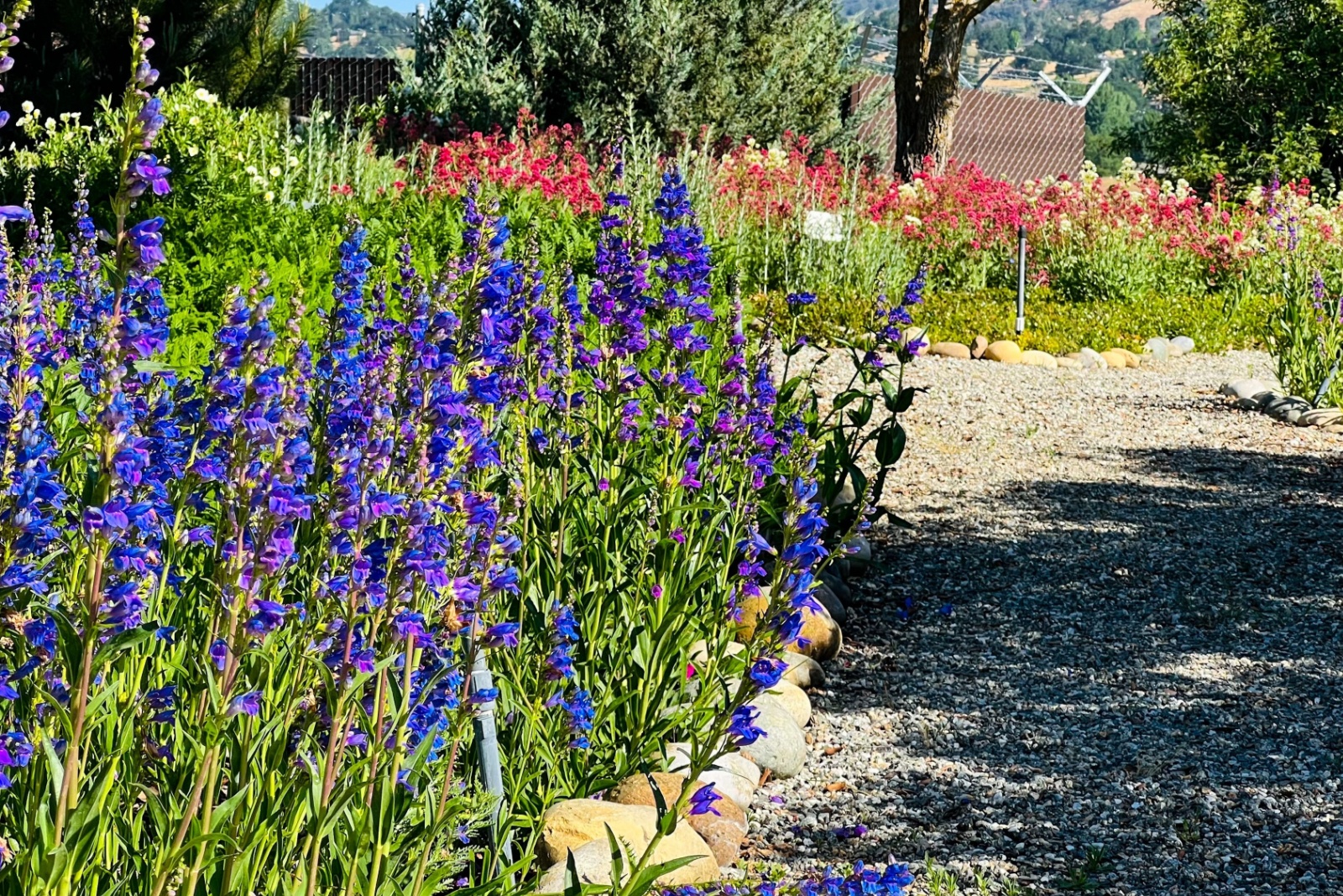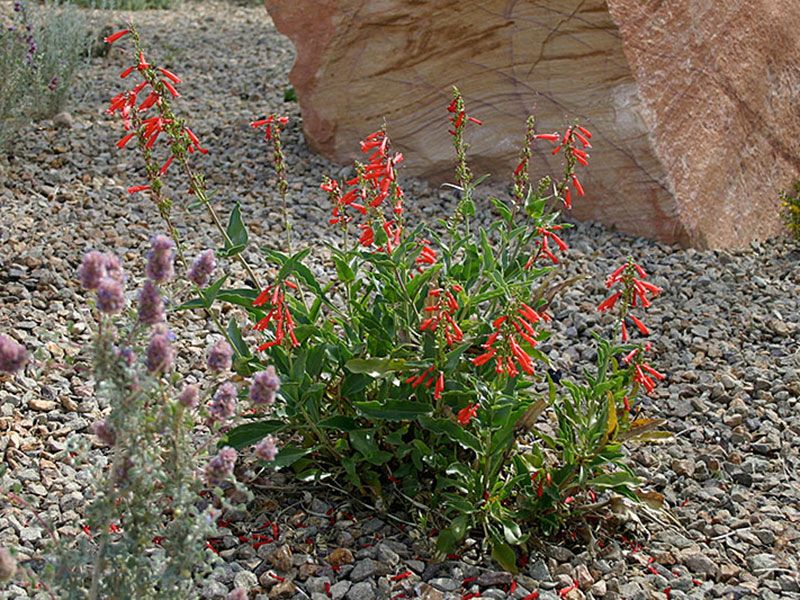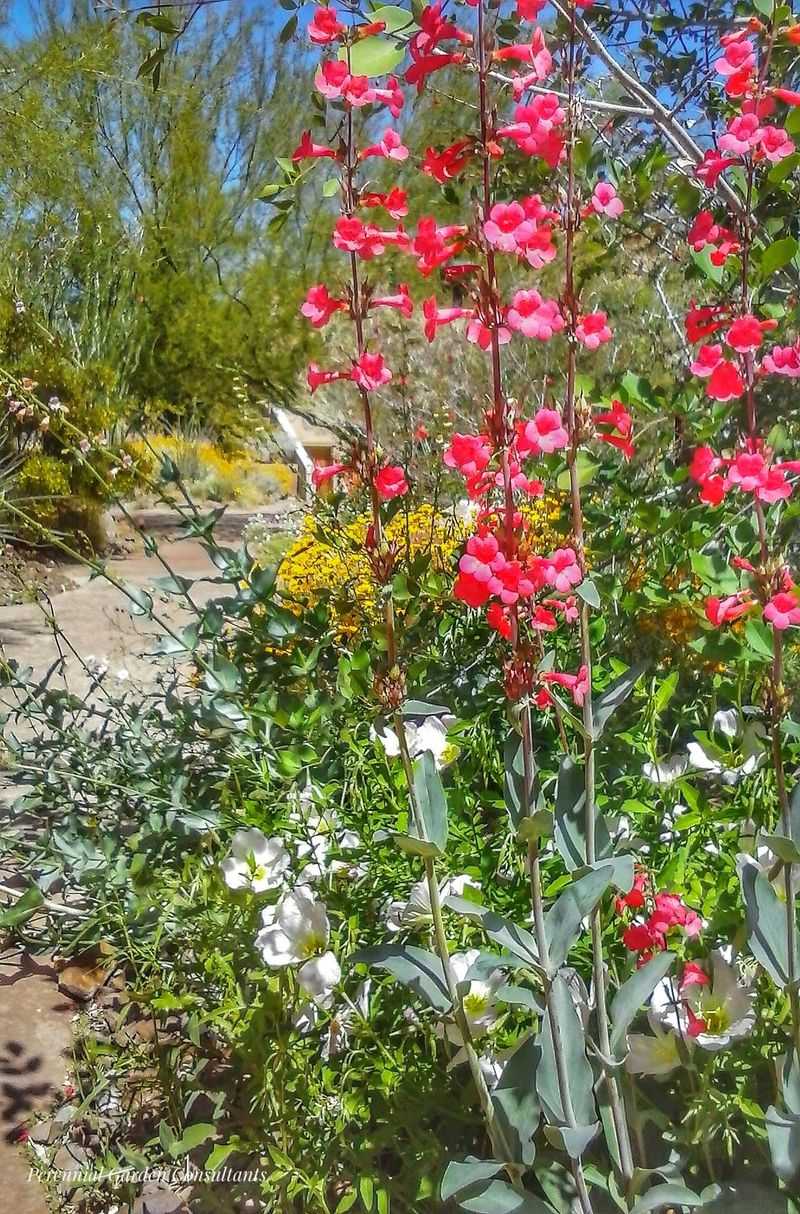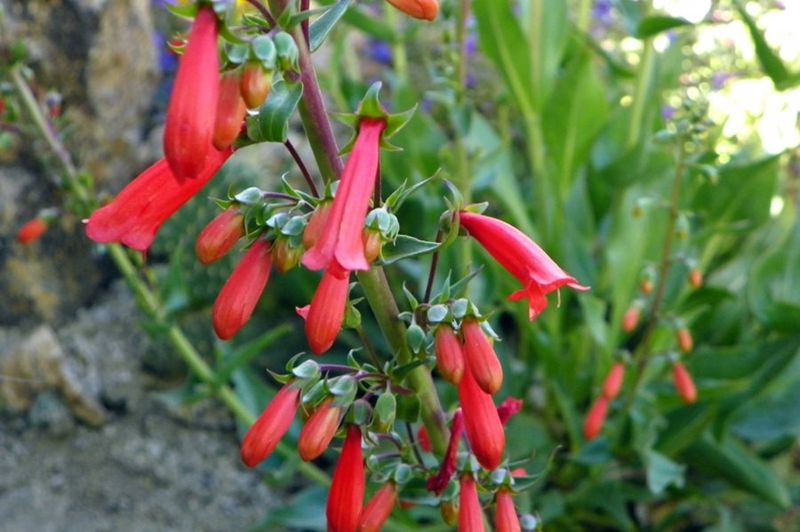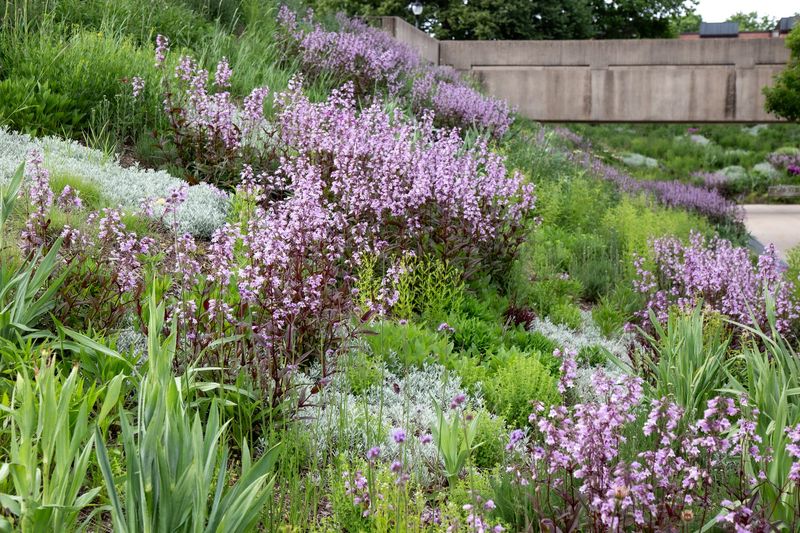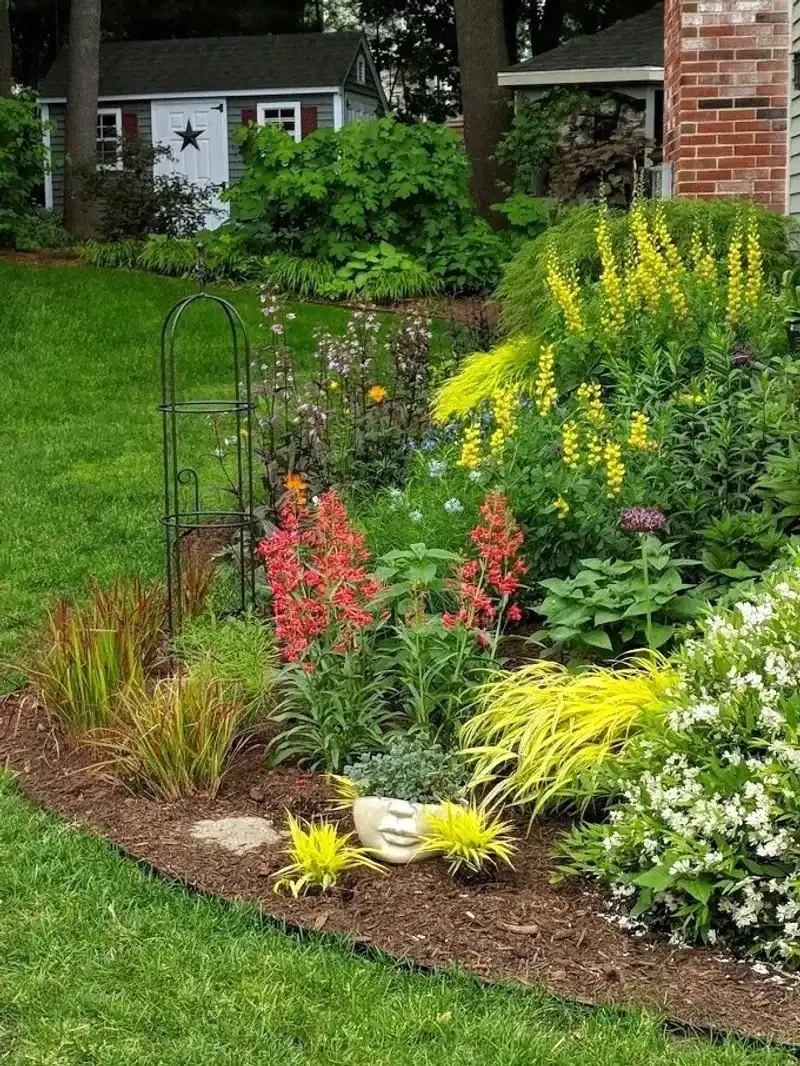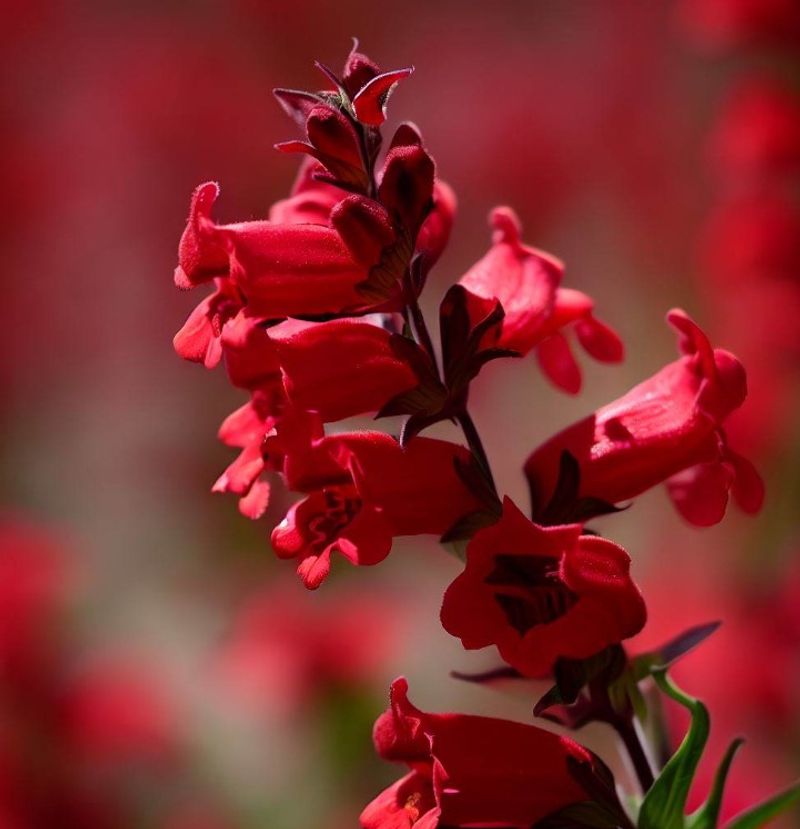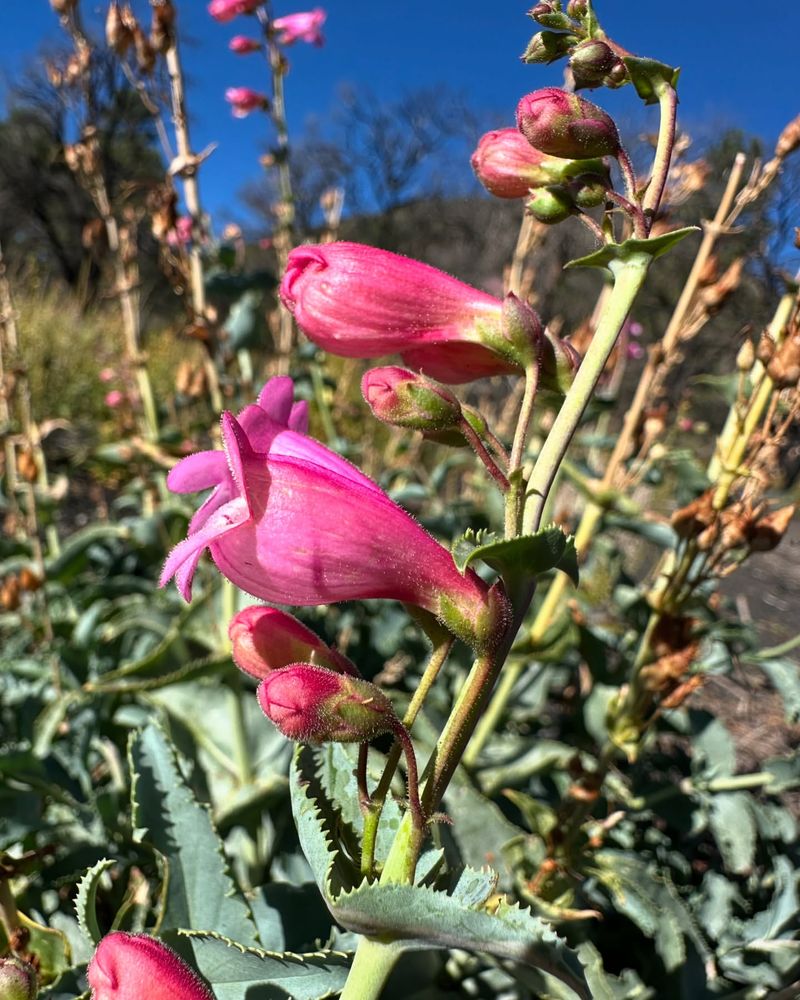Tucson’s sunny, dry climate makes traditional lawns a real water hog. Converting even part of your yard to a low-water pollinator meadow saves precious resources while creating habitat for bees, butterflies, and hummingbirds.
Native penstemons are perfect partners in these desert-friendly gardens. Their tubular flowers produce nectar that attracts pollinators, while their deep roots help them survive with minimal irrigation once established.
In my Tucson backyard, replacing a small patch of thirsty grass with desert wildflowers transformed my morning coffee spot into a wildlife-watching station. The quiet hum of bees visiting penstemon blooms feels more rewarding than any perfect lawn I’ve maintained before.
1. Desert Wash Meadow
Create a mini-arroyo effect with shallow depressions that capture rainwater. Plant Parry’s penstemon along the edges where moisture collects longer.
Add desert marigold and globe mallow in drier spots between washes. The varying moisture levels create microhabitats supporting different pollinators.
For me, these garden washes transform dramatically after summer monsoons, bursting with life when the rest of the landscape looks tired.
2. Penstemon And Prickly Pear Pairing
Tucson’s rocky soil perfectly suits this dramatic combination. Plant clusters of pink-flowering Palmer’s penstemon between established prickly pear cacti for a striking contrast.
The cacti provide partial shade and protection for the more delicate penstemons. Hummingbirds particularly love this pairing and will visit repeatedly.
Scatter some desert zinnia seeds for additional yellow blooms that need almost no water once established.
3. Wildflower Strip Along Driveway Edge
Transform that narrow strip of neglected lawn beside your driveway into a pollinator highway. Beardlip penstemon thrives in these hot, reflected-heat areas that challenge other plants.
Mix in desert marigold and blanketflower for extended blooming seasons. The strip needs only monthly deep watering once plants establish their root systems.
My driveway border attracts so many butterflies that neighbors regularly slow down to watch the fluttering display.
4. Stepping Stone Sanctuary
Flagstone pathways create perfect planting pockets for low-growing Bridges’ penstemon. The stones absorb heat during the day and release it at night, protecting tender plants from winter chills.
Between wider stones, plant desert verbena and blackfoot daisy. This meadow style works beautifully in former lawn areas where you still need walkable access.
The stones also help retain soil moisture underneath, reducing watering needs during Tucson’s driest months.
5. Morning Shade Meadow Mix
Not all Tucson yards bake in full sun. Eastern walls create perfect morning shade spots for Thurber’s penstemon, which appreciates protection from intense early sun.
Combine with white desert zinnia and purple trailing lantana for a meadow that thrives with bi-weekly watering. The morning shade location extends blooming periods by several weeks compared to full-sun gardens.
Last summer, I watched quail families visit this cooler garden spot daily, teaching their babies to forage among the gentle blooms.
6. Rock Garden With Sunset Hues
Small boulders collected from your property make perfect anchors for a sunset-colored meadow. Tuck fire-red Eaton’s penstemon between rocks where they’ll receive protection and water runoff.
Add copper-orange globemallow and golden brittlebush to complete the sunset palette. The rocks help moderate soil temperature extremes in both summer and winter.
During spring evenings, the low sun illuminates these warm-colored blooms, creating a garden that seems to glow from within.
7. Butterfly Basin With Milkweed Companions
A slight depression in your former lawn creates ideal conditions for a butterfly-focused meadow. Desert milkweed provides monarch butterfly habitat, while blue-purple Superb penstemon attracts numerous other butterfly species.
Add fairy duster and desert senna for structural variety. This combination needs deep watering only once every three weeks during Tucson’s hottest months.
The gentle basin shape helps capture precious rainfall, creating a self-sustaining ecosystem after the first year of establishment.

